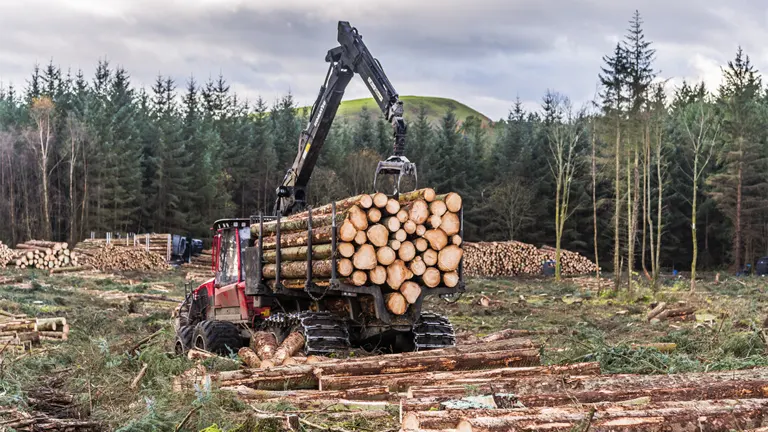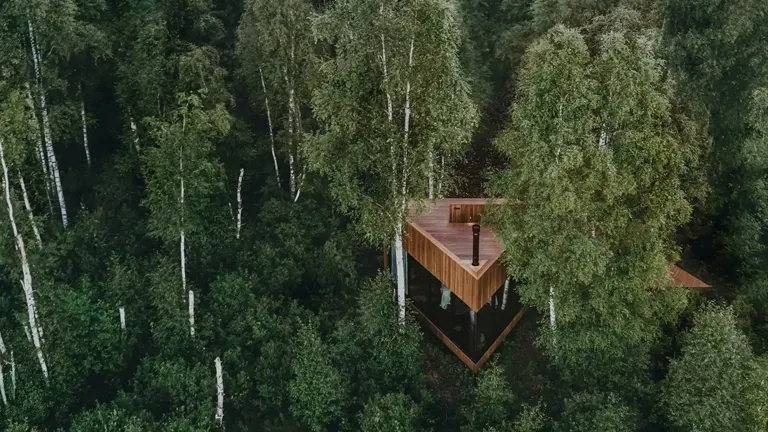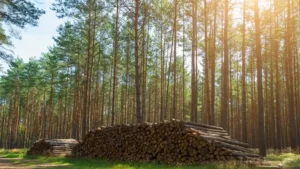Sustainable Timber in Construction: Top 6 Trends and Innovations
- September 17, 2024
- 0 comment
The term “sustainable timber” refers to wood sourced from responsibly managed forests, ensuring that the environmental, social, and economic benefits are balanced. Timber has been used for thousands of years in construction, and its sustainable counterpart ensures that future generations will have access to this renewable resource without depleting the earth’s forests.

The appeal of sustainable timber in construction lies in its ability to lower the carbon footprint of buildings, reduce waste, and support biodiversity. As industries are becoming more focused on green solutions, sustainable timber is being seen not only as a structural material but also as an essential tool in mitigating climate change.
Table of Contents:
- Emerging Trends in Sustainable Timber Construction
- Innovations in Timber Sustainability
- Regulatory Frameworks and Certifications
- Challenges in the Sustainable Timber Industry
- The Future of Timber in Sustainable Construction
- Case Studies of Sustainable Timber Projects
The Importance of Sustainable Timber
Timber sourced from sustainable forests carries certifications such as FSC (Forest Stewardship Council) or PEFC (Programme for the Endorsement of Forest Certification), ensuring that it has been harvested responsibly. By prioritizing timber from these sources, developers and builders contribute to forest conservation, carbon sequestration, and the reduction of greenhouse gas emissions.
Sustainable timber offers several benefits over traditional building materials:
- Renewability: Unlike non-renewable resources like steel or concrete, timber, when harvested sustainably, is continuously replenished.
- Carbon Storage: Wood captures and stores carbon, helping to reduce the overall carbon dioxide levels in the atmosphere.
- Energy Efficiency: The production of timber requires far less energy compared to the manufacturing processes of steel and concrete, further reducing emissions.
Emerging Trends in Sustainable Timber Construction

- Cross-Laminated Timber (CLT): Cross-Laminated Timber is revolutionizing the way timber is used in construction. This engineered wood product consists of layers of lumber bonded together in a crisscross arrangement, making it incredibly strong and versatile. CLT is now being used in mid-rise and even high-rise buildings, something previously thought impossible with traditional timber.
- Timber Skyscrapers: Tall timber buildings, also known as “plyscrapers,” are gaining attention worldwide. Architects and engineers are pushing the boundaries of what’s possible with wood, constructing taller and more complex structures. Not only are these buildings visually striking, but they also serve as icons of sustainability, demonstrating the potential for timber to replace traditional materials in large-scale urban projects.
- Modular Timber Construction: Prefabricated modular timber construction is another innovation gaining traction. This method involves assembling timber components off-site and then transporting them to the construction site for final assembly. It speeds up the building process, reduces waste, and minimizes the environmental impact associated with on-site construction.
- Biophilic Design and Timber: Biophilic design, which integrates natural elements into building architecture, is driving the increased use of timber in construction. Timber’s natural aesthetic helps create spaces that promote well-being, reduce stress, and improve productivity, making it an attractive option for homes, offices, and public buildings.
Innovations in Timber Sustainability

- Advanced Wood Treatments: To ensure longevity and durability, timber is treated with non-toxic preservatives that make it resistant to fire, rot, and pests. These advanced treatments are allowing timber to compete with more durable materials like steel and concrete in harsh environments, including areas prone to extreme weather conditions.
- Digital Fabrication Techniques: The use of digital tools such as CNC (Computer Numerical Control) machinery and 3D modeling is advancing timber construction. These technologies allow for precise cutting and shaping of timber components, leading to less waste and more complex architectural designs.
- Carbon-Neutral and Carbon-Negative Wood: There is growing interest in carbon-neutral and even carbon-negative wood products. By incorporating carbon capture technologies and utilizing sustainably harvested wood, manufacturers are producing timber that not only offsets the carbon released during production but also helps sequester additional carbon over the lifespan of a building.
Regulatory Frameworks and Certifications
Building with sustainable timber involves adhering to a range of certifications and regulatory frameworks designed to ensure environmental stewardship. Some of the most recognized certifications include:
| Certification | Organization | Focus | Benefits |
|---|---|---|---|
| FSC (Forest Stewardship Council) | International non-profit | Sustainable forest management | Ensures ethical sourcing, protects biodiversity. |
| PEFC (Programme for the Endorsement of Forest Certification) | International non-profit | Chain of custody and sustainable sourcing | Promotes forest conservation, supports local economies. |
| LEED (Leadership in Energy and Environmental Design) | U.S. Green Building Council | Sustainable building practices | Enhances building sustainability ratings, reduces carbon footprint. |
- FSC (Forest Stewardship Council): This global certification system ensures that timber products come from responsibly managed forests.
- PEFC (Programme for the Endorsement of Forest Certification): PEFC certifies wood from sustainable forests and promotes good practices throughout the supply chain.
- LEED (Leadership in Energy and Environmental Design): LEED certifications for buildings can be enhanced by using sustainable timber, contributing to the overall sustainability rating of a project.
These certifications not only provide assurance to developers and buyers about the ethical sourcing of timber but also play a critical role in promoting responsible forest management practices globally.
Challenges in the Sustainable Timber Industry
While sustainable timber presents significant environmental advantages, the industry faces a few challenges. For example:
| Challenge | Description | Impact |
|---|---|---|
| Supply Chain Limitations | Limited availability of sustainably sourced timber | Increased costs and potential project delays. |
| Public Perception | Skepticism about timber’s durability and strength | Slower adoption in large-scale projects. |
| Regulatory Barriers | Building codes favor traditional materials like concrete | Hinders wider use of sustainable timber in construction. |
- Supply Chain Limitations: The availability of sustainably sourced timber is still limited in some regions, which can drive up costs and lead to project delays.
- Public Perception: Some stakeholders remain skeptical of timber’s strength and durability compared to traditional building materials, although innovations like CLT are helping to change this perception.
- Regulatory Barriers: Local building codes and regulations in many areas still favor traditional materials over timber, despite the environmental benefits.
The Future of Timber in Sustainable Construction
Looking forward, sustainable timber is poised to play an even greater role in the future of construction. Several key factors will drive this growth:
- Urbanization: As more people move into cities, the demand for high-rise buildings is increasing. Timber, particularly CLT, offers a sustainable solution for constructing these skyscrapers.
- Environmental Awareness: Growing awareness of climate change and the environmental impact of construction is pushing more developers to adopt sustainable materials like timber.
- Technological Advancements: Ongoing innovations in timber treatments, digital fabrication, and modular construction will continue to make timber an attractive option for both large and small projects.
Case Studies of Sustainable Timber Projects
| Project Name | Location | Height | Materials Used | Environmental Impact |
|---|---|---|---|---|
| Mjøstårnet | Brumunddal, Norway | 85.4 meters | CLT, Glulam | World’s tallest timber building; significant carbon savings. |
| Brock Commons | Vancouver, Canada | 18 stories | CLT, Glulam | Fast construction, low carbon footprint, energy efficiency. |
| HoHo Tower | Vienna, Austria | 84 meters | Timber-concrete hybrid | Reduced CO₂ emissions, sustainable materials integration. |
- The Mjøstårnet Building, Norway: At 85.4 meters, the Mjøstårnet in Brumunddal, Norway, is currently the tallest timber building in the world. This mixed-use structure combines offices, apartments, and a hotel, demonstrating how sustainable timber can be used for large-scale urban construction projects.
- Brock Commons, Canada: Brock Commons Tallwood House in Vancouver, Canada, is an 18-story student residence constructed primarily from CLT. This building showcases the speed and efficiency of using modular timber construction techniques.
- HoHo Tower, Austria: The HoHo Tower in Vienna stands at 84 meters and is constructed from a combination of timber and concrete. It highlights the potential for hybrid construction methods that leverage timber’s sustainability alongside the strength of traditional materials.
Conclusion
As the world grapples with the realities of climate change, the construction industry is increasingly turning to sustainable timber as a viable alternative to traditional building materials. From CLT and timber skyscrapers to modular and biophilic designs, timber is shaping the future of construction in exciting and innovative ways. As regulations evolve and technology advances, the adoption of sustainable timber in mainstream construction is expected to grow, helping to reduce the environmental impact of the built environment and create healthier, more resilient communities.
Frequently Asked Questions (FAQs)
- What is sustainable timber in construction?
Sustainable timber refers to wood sourced from responsibly managed forests, ensuring that the wood is harvested in a way that maintains forest biodiversity, productivity, and ecological processes. It’s an eco-friendly option used in construction to reduce environmental impact. - How does sustainable timber benefit the environment?
Sustainable timber helps reduce carbon emissions, supports biodiversity, and ensures renewable wood resources. It also sequesters carbon, making it an effective tool in combating climate change. Additionally, producing timber requires less energy compared to traditional materials like steel and concrete. - What is Cross-Laminated Timber (CLT) and why is it important?
Cross-Laminated Timber (CLT) is an engineered wood product made from layers of wood glued together in a crisscross pattern. It’s important because it offers strength and durability comparable to traditional materials like steel or concrete, enabling timber to be used in larger and taller buildings, including mid-rise and high-rise structures. - What are some recent innovations in sustainable timber?
Innovations include the development of CLT, modular timber construction, advanced wood treatments, and digital fabrication techniques. These advancements allow timber to be used in more complex structures, improve its durability, and reduce waste. - What is modular timber construction?
Modular timber construction involves prefabricating timber components off-site and then assembling them on-site. This method speeds up the construction process, reduces waste, and minimizes the environmental impact of traditional construction practices. - Are timber skyscrapers safe and structurally sound?
Yes, timber skyscrapers, also known as “plyscrapers,” are structurally sound. Advanced engineering techniques, including the use of CLT, make these buildings strong, durable, and fire-resistant. Projects like the Mjøstårnet in Norway prove that timber can be used safely in tall structures. - How does sustainable timber compare to traditional materials like steel and concrete?
Sustainable timber has a lower environmental footprint compared to steel and concrete. It is renewable, stores carbon, and requires less energy to produce. While steel and concrete may offer certain structural advantages, innovations like CLT make timber a competitive and eco-friendly alternative. - What certifications should I look for when sourcing sustainable timber?
Look for certifications like FSC (Forest Stewardship Council) or PEFC (Programme for the Endorsement of Forest Certification). These certifications ensure that the timber is sourced from responsibly managed forests and meets sustainable harvesting standards. - What are the challenges of using sustainable timber in construction?
Challenges include limited availability in some regions, higher costs due to supply chain constraints, public skepticism about its durability, and building regulations that may still favor traditional materials. However, these challenges are being addressed as demand and technology evolve. - What is the future of sustainable timber in construction?
The future of sustainable timber is promising, driven by increasing urbanization, environmental awareness, and technological advancements. With innovations like CLT and modular timber construction, timber is set to play a larger role in eco-friendly building solutions, helping the construction industry reduce its environmental impact.
We hope this guide has offered valuable insights into the future of sustainable timber in construction. Have experience with sustainable timber or ideas to improve eco-friendly building? Share your thoughts below and help inspire others to embrace sustainable practices. Don’t forget to share this guide with those passionate about green building and responsible construction.

Edward Smith
Forestry AuthorWoodworking is about more than crafting; it's a harmonious connection with nature, mastering tools, and preserving our environment. I'm here to share my knowledge and experiences with you, forging a future where we can embrace wood's beauty and utility while safeguarding our forests' health and diversity.












Leave your comment